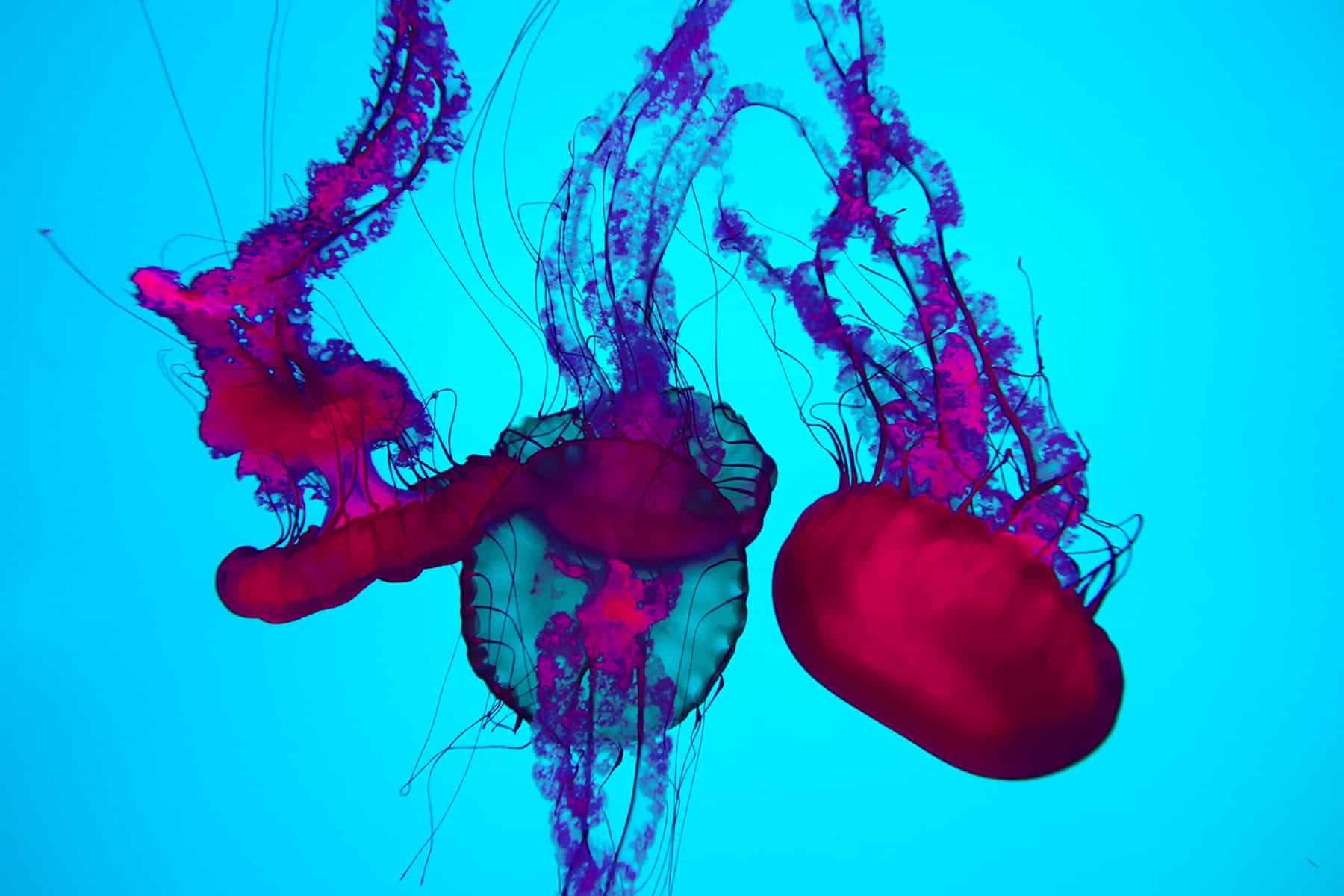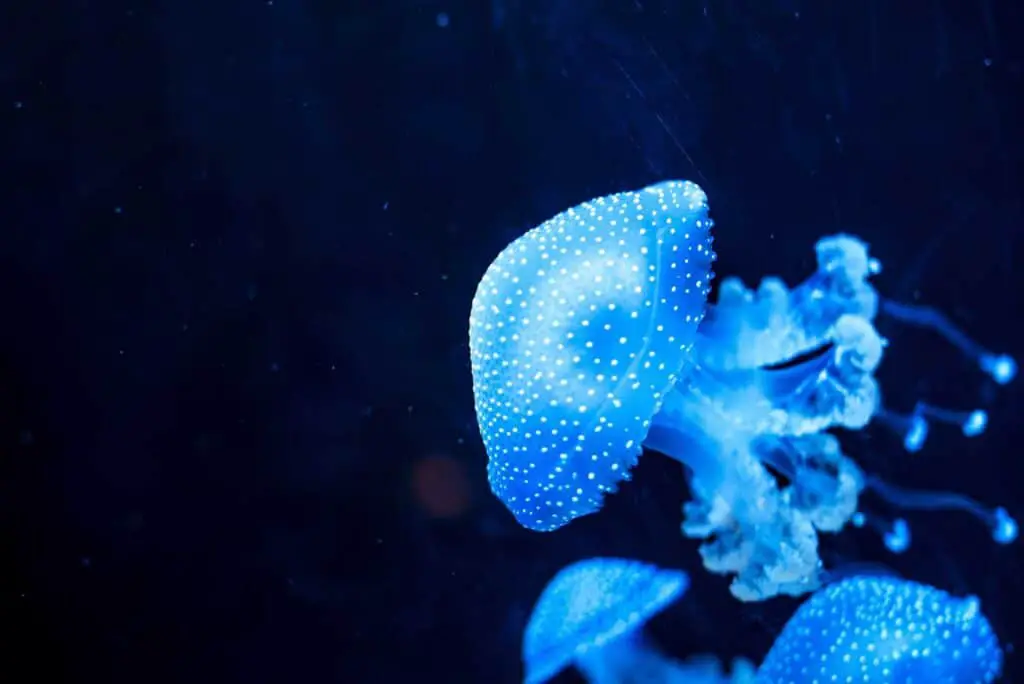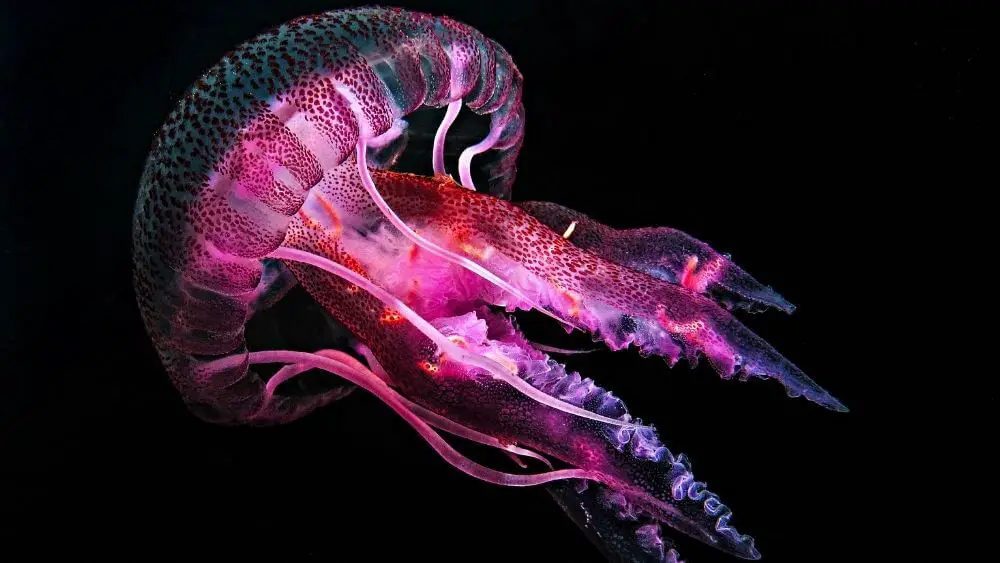Do Jellyfish Glow

Introduction
Do Jellyfish Glow: Jellyfish, those graceful and enigmatic creatures of the ocean, have long captured the imagination of scientists and nature enthusiasts alike. One of the most captivating aspects of these gelatinous marine organisms is their ability to emit an ethereal, otherworldly glow. This phenomenon, known as bioluminescence, has fascinated researchers for centuries and continues to be a subject of extensive scientific inquiry.
Bioluminescence in jellyfish is a mesmerizing display of nature’s ingenuity. This natural light show occurs when specialized cells within the jellyfish, called photocytes, emit flashes of light. But why do jellyfish glow? What purpose does this bioluminescence serve in their lives and in the broader context of marine ecosystems?
In this exploration of the world of glowing jellyfish, we will delve into the mechanisms behind their bioluminescence, the fascinating evolutionary adaptations that enable this capability, and the various roles it plays in the survival and behavior of these intriguing creatures.
We will also examine how humans have harnessed and studied this natural phenomenon, shedding light on the secrets of the deep sea and expanding our understanding of the intricate web of life beneath the waves. Join us on this luminous journey into the mysterious world of jellyfish and their mesmerizing glow.

Do jellyfish glow in the water?
It is estimated that about 50% of jellyfish are bioluminescent. There are many different types represented, including siphonophores (related to the Portuguese man-o-war), medusae, sea pens and other soft corals, and ctenophores (comb jellies).
Jellyfish do indeed glow in the water, a phenomenon known as bioluminescence. This captivating display of light is a result of a chemical reaction that occurs within specialized cells in their bodies. Specifically, it is the interaction between a light-emitting molecule called luciferin and an enzyme called luciferase that gives rise to the mesmerizing glow. When luciferin reacts with oxygen, it produces light without generating heat, creating the ethereal illumination that characterizes bioluminescent jellyfish.
The purpose behind this bioluminescence can vary among different species of jellyfish. Some employ it as a hunting strategy, using their glowing tentacles to attract prey in the darkness of the ocean depths. Others utilize it for communication, signaling to potential mates or warding off predators. Additionally, bioluminescence can serve as a form of camouflage, helping jellyfish blend into their surroundings and avoid detection.
Overall, the ability of jellyfish to emit light in the water is a testament to the incredible adaptability and complexity of marine life. It continues to intrigue scientists and enchant observers, offering a glimpse into the fascinating world that exists beneath the surface of our oceans.
What jellyfish glows up?
Moon Jellies are a glowing species of bioluminescent fish. Moon Jellyfish prefer warmer coastal waters near the beach. Moon Jellyfish can deage and even get younger. Moon Jellies have been studied in space.
The phenomenon of bioluminescence is not limited to a specific type of jellyfish, but rather, it can be observed in various species across the taxonomic spectrum. One of the most renowned bioluminescent jellyfish is the Aequorea victoria, commonly known as the crystal jellyfish. This species, found in the Pacific Northwest, is celebrated for its greenish-blue luminescence, which stems from the protein aequorin and the green fluorescent protein (GFP) it produces.
Another notable bioluminescent species is the Atolla jellyfish, often referred to as the “alarm jellyfish.” This remarkable creature resides in the deep-sea regions, where it uses bioluminescence as a defense mechanism. When threatened, the Atolla emits a series of brilliant blue flashes, creating a mesmerizing display that may startle or confuse potential predators.
Beyond these examples, there exists a diverse array of bioluminescent jellyfish species, each exhibiting its unique patterns and colors of light emission. The ability to glow underwater is an evolutionary adaptation that serves a variety of purposes, from predation and communication to camouflage and defense. The collective existence of these luminous creatures underscores the profound wonders that continue to be uncovered within the depths of our planet’s oceans.
What color is a jellyfish glow?
Green
But there was a further mystery: Crystal jellies glow green, not blue. A crystal jelly shows its fluorescence under a black light. Green fluorescent protein (GFP) absorbs blue light and emits green.
The color of a jellyfish’s glow can vary depending on the species and the specific proteins involved in the bioluminescent process. One of the most common colors observed in bioluminescent jellyfish is a vibrant blue-green hue. This coloration is often produced by a combination of light-emitting molecules such as luciferin and specialized proteins like green fluorescent protein (GFP), as seen in the Aequorea victoria, commonly known as the crystal jellyfish.
In some instances, jellyfish may emit a more subdued blue or green light, while others might display a brilliant and vivid display of bioluminescence. For instance, the Atolla jellyfish, known for its defense mechanism of emitting bright blue flashes, creates a striking spectacle in the depths of the ocean.
Additionally, there are other species of jellyfish that exhibit a range of colors in their bioluminescent displays, including reds, purples, and even whites. These diverse colorations are a testament to the complex biochemical processes at play within these fascinating creatures, and they highlight the astonishing variety of life that inhabits the world’s oceans.
Do jellyfish glow under UV light?
Green fluorescent protein—GFP—is a wonder of the natural world. This barrel-shaped protein makes jellyfish glow green under blue and ultraviolet light. Scientists can use this protein and its cousins that glow in different colors to track biochemical processes, opening new paths for research.
Jellyfish can exhibit fluorescence under ultraviolet (UV) light. This fascinating property is due to the presence of certain proteins in their tissues, particularly green fluorescent protein (GFP), which is found in species like the Aequorea victoria, commonly known as the crystal jellyfish. When exposed to UV light, GFP absorbs the high-energy photons and re-emits them at a lower energy level, producing a visible glow.
This fluorescence is particularly striking in jellyfish that possess GFP or similar light-emitting proteins. Under UV light, these jellyfish can appear to emanate vibrant and vivid colors, ranging from bright greens to deep blues. This fluorescence has proven invaluable in scientific research, as GFP and related proteins are widely used as molecular markers to track cellular processes and gene expression in various organisms.
The ability of jellyfish to fluoresce under UV light adds an extra layer of wonder to their already captivating bioluminescent displays. It underscores the complexity of their biology and their capacity to interact with light in extraordinary ways. Observing jellyfish under UV light not only reveals hidden facets of their biology but also serves as a reminder of the marvels that await discovery in the natural world.
Do all jellyfish glow at night?
It’s true! About 50% of jellyfish can produce light. This amazing ability is called “luminescence” or “bioluminescence.” Jellyfish use bioluminescence mainly to defend against predators.
While some species are known for their remarkable bioluminescent displays, others may produce only faint or sporadic light. Additionally, some jellyfish are bioluminescent only during specific stages of their life cycle.
For instance, the Aequorea victoria, or crystal jellyfish, is renowned for its bioluminescence and is known to emit a soft greenish-blue glow. On the other hand, species like the Atolla jellyfish are primarily known for their defensive bioluminescence, which they employ when threatened.
There are many jellyfish species that do not possess the biological mechanisms for bioluminescence at all. These species rely on other adaptations and strategies for survival, such as stinging tentacles or intricate swimming patterns.
While bioluminescence is a captivating trait found in numerous jellyfish species, it is not a universal characteristic. Each species has its own set of unique adaptations and survival strategies, making the world of jellyfish a diverse and intriguing realm within the depths of the world’s oceans.
How do bioluminescent jellyfish produce light?
Bioluminescent jellyfish possess specialized cellular structures and biochemical processes that enable them to produce light. At the heart of this phenomenon lies a molecule called luciferin, which reacts with oxygen in the presence of an enzyme called luciferase. When luciferin and oxygen combine, they undergo a chemical reaction that releases energy in the form of visible light.
In addition to luciferin and luciferase, certain species of bioluminescent jellyfish also contain other light-modulating proteins, such as green fluorescent protein (GFP), which can enhance or alter the color of the emitted light. For example, the Aequorea victoria jellyfish, known for its greenish-blue bioluminescence, owes its coloration to the presence of GFP.
The process of bioluminescence serves various purposes for jellyfish, including predation, communication, defense, and camouflage. Depending on the species, the light may be used to attract prey, deter predators, signal for mating, or even create a dazzling display as a defense mechanism.
Overall, the ability of bioluminescent jellyfish to produce light is a testament to the complexity and adaptability of marine life, and it continues to captivate scientists and enthusiasts alike.
Do all jellyfish glow?
While bioluminescence is a fascinating trait found in many species of jellyfish, it is not a universal characteristic across the entire jellyfish family. The ability to produce light is contingent on the presence of specific biochemical components and cellular structures within the jellyfish.
Some jellyfish are indeed renowned for their bioluminescence. For example, the Aequorea victoria, commonly known as the crystal jellyfish, is celebrated for its greenish-blue glow, attributed to the presence of the light-emitting protein GFP (green fluorescent protein). Another notable example is the Atolla jellyfish, which employs bioluminescence as a defense mechanism, producing bright blue flashes when threatened.
However, there are numerous species of jellyfish that lack the biological mechanisms necessary for bioluminescence. These jellyfish rely on other survival strategies, such as stinging tentacles or complex swimming patterns.
While bioluminescence is a captivating trait found in a subset of jellyfish species, it is not a universal characteristic for the entire group. The world of jellyfish is diverse, with each species exhibiting its unique adaptations and survival strategies in the marine environment.
Can you see a jellyfish glow in daylight?
The bioluminescence of a jellyfish is typically not visible in daylight. This fascinating natural phenomenon relies on specific conditions to be observed. Bioluminescence is most striking and noticeable in low-light or dark environments, where the emitted light stands out against the surrounding darkness. In bright daylight, the ambient light overwhelms the relatively faint bioluminescent glow, making it nearly impossible to perceive.
To witness the enchanting bioluminescence of a jellyfish, one would need to observe it in dimly lit conditions, such as during nighttime or in the depths of the ocean where sunlight cannot reach. In these settings, the jellyfish’s bioluminescent display becomes a mesmerizing spectacle, illuminating the surrounding water with its radiant glow.
However, it’s important to note that not all jellyfish species are bioluminescent, and even among those that are, the intensity and visibility of their bioluminescence can vary. Therefore, encountering a bioluminescent jellyfish in the right environment and conditions can be a rare and remarkable experience for those fortunate enough to witness it.

Conclusion
The phenomenon of bioluminescence in jellyfish is a captivating and complex natural marvel. Through a combination of specialized proteins, chemical reactions, and unique cellular structures, these enigmatic creatures produce a mesmerizing glow that has intrigued scientists and mesmerized observers for centuries. The purpose behind this bioluminescence varies across species, serving functions ranging from predation to communication and self-defense.
The study of jellyfish bioluminescence has not only enriched our understanding of marine biology but also opened up new avenues for scientific research and technological applications. The proteins responsible for the radiant glow have been harnessed in various fields, from medical imaging to environmental monitoring.
The mysteries surrounding this phenomenon persist. Questions regarding the precise mechanisms that regulate bioluminescence in different jellyfish species, as well as the full extent of its ecological significance, remain subjects of ongoing research.
In a rapidly changing world, where marine ecosystems face unprecedented challenges, a deeper comprehension of jellyfish bioluminescence may hold the key to unlocking crucial insights into the broader interconnectedness of life beneath the waves. As we continue to explore and protect our planet’s oceans, the luminous beauty of jellyfish serves as a poignant reminder of the wonders that await discovery in the depths of our planet’s most enigmatic realm.



